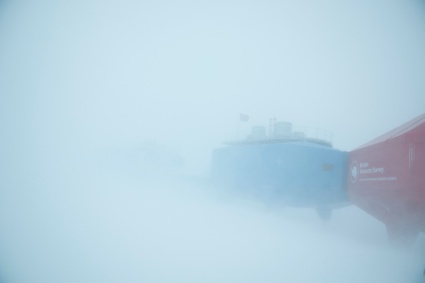 Halley VI, Copyright A. Dubber, British Antarctic Survey. Image © Anthony Dubber
Halley VI, Copyright A. Dubber, British Antarctic Survey. Image © Anthony Dubber
Last week i went to Manchester. I could never go too often to that city, especially when a number of exhibitions made another day in London less attractive. My first stop was for Ice Lab: New Architecture and Science in Antarctica at MOSI – Museum of Science & Industry.
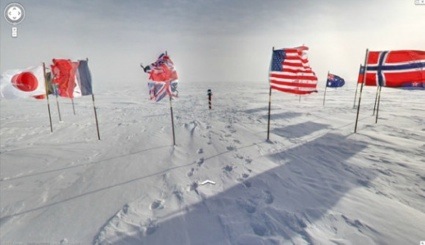
Google Street view of the geographic South Pole (image slashgear)
Ice Lab presents some of the most innovative and progressive examples of contemporary architecture in Antarctica, drawing together projects that not only utilise cutting-edge technology and engineering, but have equally considered aesthetics, sustainability and human needs in their ground-breaking designs for research stations.
The show focuses on some spectacular research structures but it also presents some of the most extraordinary scientific and geological characteristics of Antarctica. That’s the bit that got most of my attention. Here’s some of random facts i learnt while visiting the show:
Because of its extremely cold and dry climate, Antarctica is the closest analogue to an extraterrestrial site on Earth. The region is thus used to test technologies that might be used for Mars exploration. The NDX-1 is a planetary suit prototype designed by a team of graduate students lead by Pablo de León and mobility expert Gary L. Harris.
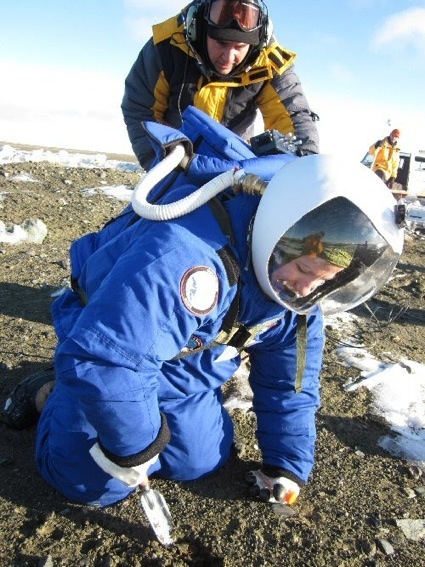 The NDX-1 space suit
The NDX-1 space suit
Nacreous clouds form only when temperatures in the high atmosphere drop below -85 degree Celcius. They might be beautiful but they also trigger the depletion of the ozone layer.
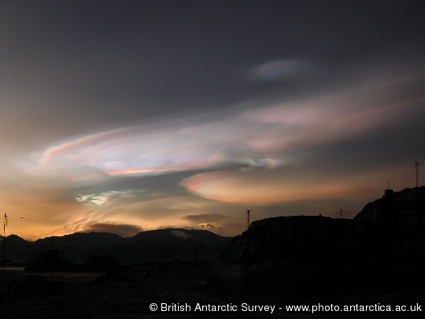 Nacreous Clouds glowing in the winter sky above Rothera. Image British Antarctic Survey
Nacreous Clouds glowing in the winter sky above Rothera. Image British Antarctic Survey
The Antarctic Plateau, at 2800m high, is great place to observe planets and stars. The air is unpolluted and the atmosphere is stable and very dry. The geographic South Pole hosts a complex of telescopes that use wavelengths other than visible light to look for evidence of dark energy and for cosmic microwave signature left over from when the universe was formed.
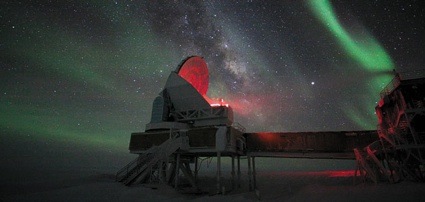 The South Pole Telescope built to investigate cosmic rays and explore dark matter. Photo Keith Vanderlinde / National Science Foundation (via Smithsonianmag)
The South Pole Telescope built to investigate cosmic rays and explore dark matter. Photo Keith Vanderlinde / National Science Foundation (via Smithsonianmag)
Ice cores, obtained by drilling into an ice sheet or glacier, are formed of layers derived from snow that fell at a certain time, and each layer is like a time capsule. The bubbles of ancient air they contain reveal information about the past climate and environment, such as Palaeolithic weather patterns for example.
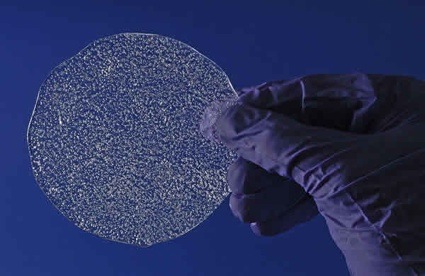 A slice of an ice core showing trapped air bubbles. © British Antarctic Survey, Pete Bucktrout (via Discovering Antarctica)
A slice of an ice core showing trapped air bubbles. © British Antarctic Survey, Pete Bucktrout (via Discovering Antarctica)
The McMurdo Dry Valleys of Antarctica are located in a polar desert blasted by ferocious winds. The harsh environment provides ideal circumstances for the creation of ventrifacts, geologic formations shaped by the forces of wind.
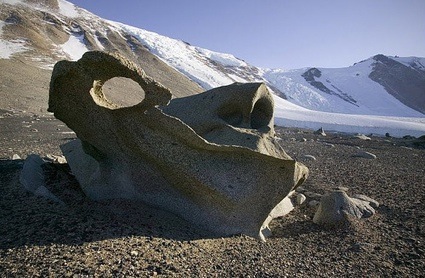 Ventifacts in the Dry Valley. Photo by George Steinmetz via from Amazing photography
Ventifacts in the Dry Valley. Photo by George Steinmetz via from Amazing photography
But let’s get to the architectural part. The exhibition presents 5 case studies: Halley VI, UK (Hugh Brougton Architects) Princess Elizabeth, Belgium (International Polar Foundation), Bharati, India (bof architekten/IMS), Jang Bogo, South Korea (Space Group), and the Iceberg Living Station (MAP Architects), a speculative design for a subterranean station carved out of compacted snow.
Architects of the research stations face three main challenges: ensure inhabitants a pleasant working life sheltered from the harsh weather conditions, build a station that will be strong enough to withstand the Antarctic’s onslaught and construct a structure that will have minimum environmental impact.
The featured projects are:
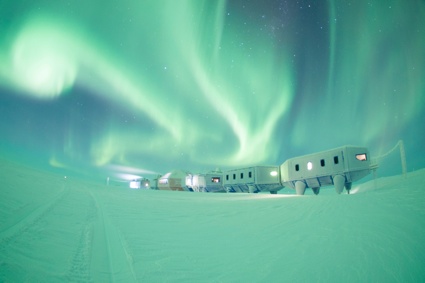 Halley VI, Copyright A. Dubber, British Antarctic Survey. Image © Anthony Dubber
Halley VI, Copyright A. Dubber, British Antarctic Survey. Image © Anthony Dubber
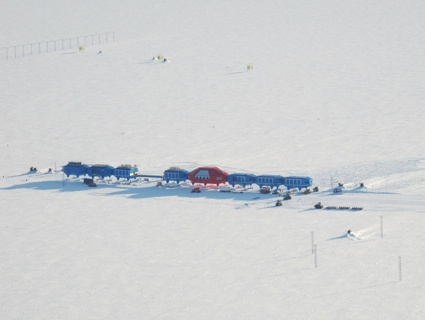 Aerial view of Halley VI Research Station. Halley VI, Copyright A. Dubber, British Antarctic Survey. Image © Anthony Dubber
Aerial view of Halley VI Research Station. Halley VI, Copyright A. Dubber, British Antarctic Survey. Image © Anthony Dubber
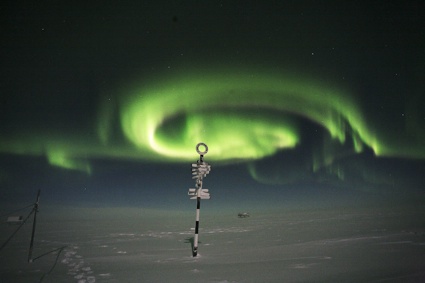 Aurora above the Halley signpost. Halley VI, Copyright A. Dubber, British Antarctic Survey. Image © Anthony Dubber
Aurora above the Halley signpost. Halley VI, Copyright A. Dubber, British Antarctic Survey. Image © Anthony Dubber
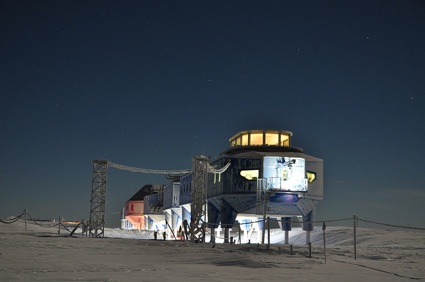 Halley VI Research Station in winter. Halley VI, Copyright A. Dubber, British Antarctic Survey. Image © Anthony Dubber
Halley VI Research Station in winter. Halley VI, Copyright A. Dubber, British Antarctic Survey. Image © Anthony Dubber
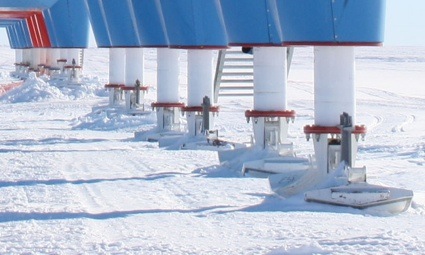 Close-up view of Halley VI’s legs. Halley VI, Copyright A. Dubber, British Antarctic Survey. Image © Anthony Dubber
Close-up view of Halley VI’s legs. Halley VI, Copyright A. Dubber, British Antarctic Survey. Image © Anthony Dubber
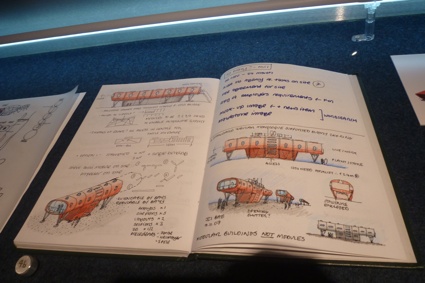
Fully operational since February 2013, the British Antarctic Survey’s Halley VI was designed by Hugh Broughton Architects and engineered by AECOM (UK). Located on a floating ice shelf, the structure is the first fully relocatable polar research station, it is also self-sufficient, able to withstand freezing winter temperatures of minus 55ºC and has minimal impact on Antarctica’s pristine environment.
Halley VI is built using modules supported by hydraulically driven legs with giant steel skis which allow the station to mechanically ‘climb’ up out of the snow every year. As the ice shelf the station is built on moves out towards the ocean, the modules can be towered by bulldozers further inland, to eventually be taken apart when the time comes.
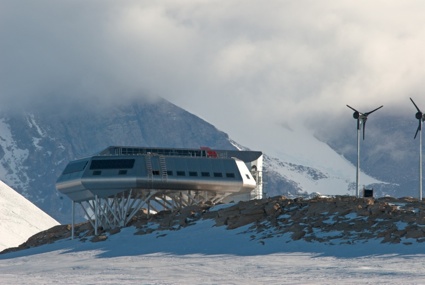 Princess Elisabeth Antarctica Research Station © René Robert – International Polar Foundation
Princess Elisabeth Antarctica Research Station © René Robert – International Polar Foundation
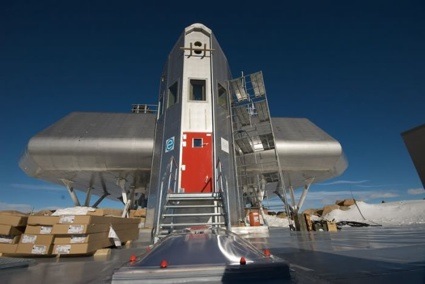 Princess Elisabeth Antarctica Research Station © René Robert – International Polar Foundation
Princess Elisabeth Antarctica Research Station © René Robert – International Polar Foundation
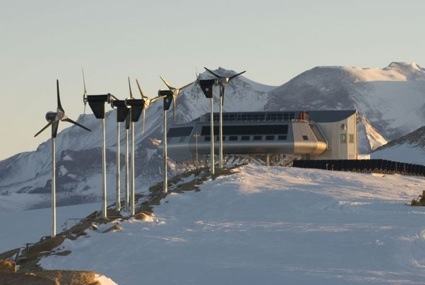 Princess Elisabeth Antarctica Research Station. Photo © René Robert – International Polar Foundation
Princess Elisabeth Antarctica Research Station. Photo © René Robert – International Polar Foundation
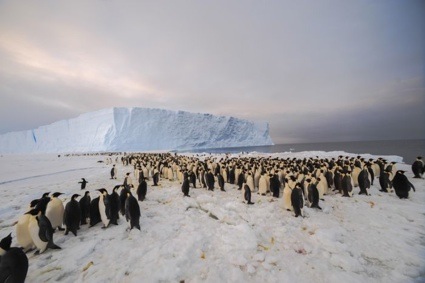 The newly-discovered 9,000-strong emperor penguin colony on Antarctica’s Princess Ragnhild Coast. Photo © International Polar Foundation/Alain Hubert
The newly-discovered 9,000-strong emperor penguin colony on Antarctica’s Princess Ragnhild Coast. Photo © International Polar Foundation/Alain Hubert
Belgium’s Princess Elisabeth is the first zero-emission station in Antarctica. Perched on a nunatak, the aerodynamic stainless steel structure integrates renewable wind and solar energy, water treatment facilities, passive building technologies and a smart grid for maximising energy efficiency. It has no interior heating system.
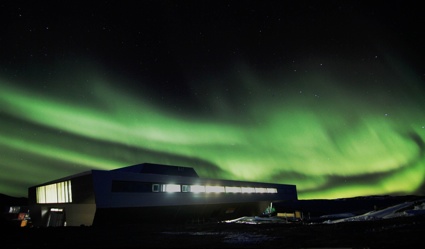 Polarlicht. Bharati.bof Architekten IMS.copyright NCAOR (National Centre for Antarctic and Ocean Research
Polarlicht. Bharati.bof Architekten IMS.copyright NCAOR (National Centre for Antarctic and Ocean Research
Bharati Research Station India’s third Antarctic research station by bof Architekten / IMS is made from 134 prefabricated shipping containers.
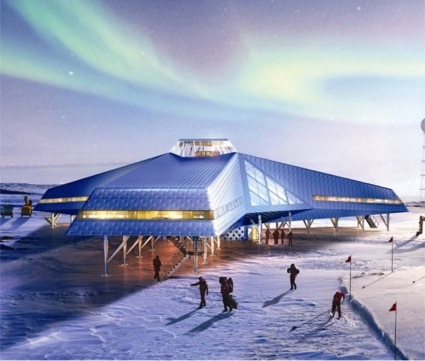 Architect Impression: Jang Bogo / Space Group and KOPRI
Architect Impression: Jang Bogo / Space Group and KOPRI
Jang Bogo Korea, by Space Group (South Korea), will be one of the largest year-round bases on the continent when it opens in 2014, able to accommodate up to 60 personnel in the Summer.
 South Pole Section, Iceberg Living Station / MAP Architects © British Council Architecture Design Fashion
South Pole Section, Iceberg Living Station / MAP Architects © British Council Architecture Design Fashion
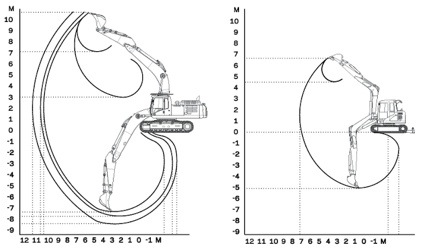
MAP Architects, Iceberg Living Station. Animation made for Icelab Exhibition
Unsurprisingly, the speculative design for a research station was the one that seduced me the most.
Iceberg Living Station, the concept for a future research station by David Garcia / MAP Architects, would be made entirely from ice. The station would be holed out of a large iceberg, using caterpillar excavators that are traditionally used to clear snow. Icebergs have an average life span of about 12 to 15 years. The inhabitants would then leave the iceberg, taking with them all the energy and work infrastructure, “leaving only the architecture behind to melt away and be part of the oceans again,” Garcia explained.
Finally, Torsten Lauschmann was showing two a new audio and light works, ‘Whistler’ and ‘Ice Diamond’, both commissioned for the exhibition.
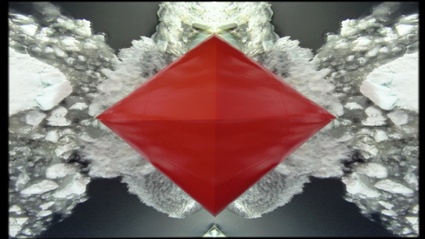 Torsten Lauschmann, Ice Diamond (still), 2013
Torsten Lauschmann, Ice Diamond (still), 2013
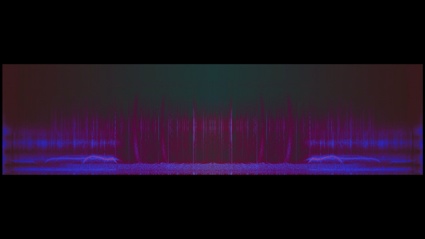 Torsten Lauschmann, Whistler (still), 2013
Torsten Lauschmann, Whistler (still), 2013
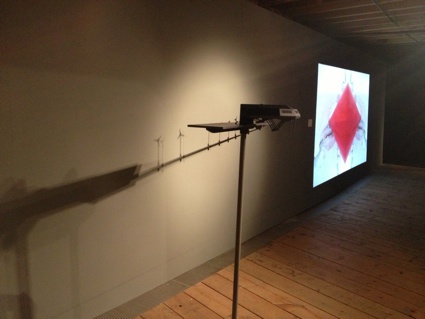 View of the exhibition space. Photo Jo Fells
View of the exhibition space. Photo Jo Fells
You can (and you should) download the free eBook version of Ice Lab catalogue.
Ice Lab: New Architecture and Science in Antarctica was curated by Sandra Ross of the Arts Catalyst and initiated by the British Council. The exhibition remain open at MOSI – Museum of Science & Industry in Manchester until 6 January.
